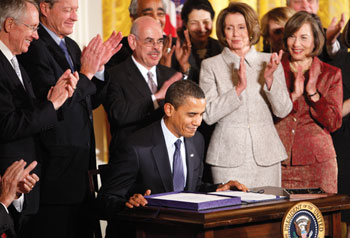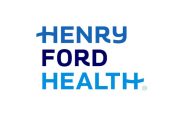
President Barack Obama said when he signed into law a new expanded version of the State Children’s Health Insurance Program on February 4: "No child should be receiving his care in the emergency room in the middle of the night." Obviously, he doesn’t realize that children with SCHIP coverage very often get their medical care in emergency rooms — at all times of the day, even more frequently than uninsured people do. The Heritage Foundation reported in 2007: "Data from the Centers for Disease Control (CDC) show that Medicaid and SCHIP enrollees are twice as likely as the uninsured and four times as likely as those who have private insurance to use the emergency department for non-urgent problems."
One likely reason for the heavy reliance on emergency rooms by Medicaid and SCHIP enrollees is that they are less worried about out-of-pocket expenses (they aren’t required to cover many). Another is that approximately one-third of pediatric primary-care physicians will not see any new Medicaid or SCHIP patients because of the low reimbursement rate by the government, so even though the enrollees are "insured," doctors won’t see them.
SCHIP is intended to publicly cover healthcare for families that make too much to be covered by Medicaid, but not enough to purchase private insurance. Its intent is used to justify the great reliance on emergency-room treatment for primary-care problems: it is deemed a necessary evil because if kids weren’t getting their basic health needs met in emergency rooms, their health problems would likely get worse and lead to very serious and expensive emergency-room treatment later. This is, in fact, a primary justification for both Medicaid and SCHIP — that and the fact that children should not have to suffer for the failings of their parents.
Gobs of Money
But even if one accepts both points — and it’s hard not to when one-quarter of all children in the United States obtain healthcare coverage through Medicaid and SCHIP, and that’s a lot of kids to simply deprive of health coverage and much medical care — one cannot argue with the fact that Medicaid and SCHIP both cost gobs of money for the amount of services they actually provide. And they both have far-reaching consequences that will (along with Medicare), without exaggeration, functionally destroy medical care in the United States if they continue down the same path.
Behind the doom-and-gloom prognosis for medical care are cost incentives and disincentives associated with Medicaid and SCHIP. Both programs pay to medical providers — doctors and hospitals — only a fraction of the actual cost of care provided, meaning these providers either suffer a loss on such care or transfer those losses to people who have private health coverage. The Child Policy Research Center, which strongly advocates for SCHIP, said that "the American Academy of Pediatrics reported that Medicaid/SCHIP reimbursement rates are only 70% of Medicare rates and are even a smaller fraction of typical commercial rates."

The low reimbursement rate has disastrous ramifications. First, because there aren’t sufficient primary-care doctors to see the patients, the patients, as we said earlier, get an inordinate amount of their care in hospital emergency rooms, even more than uninsured people. Second, along with high medical malpractice insurance rates that doctors must carry just to practice medicine and other overhead costs, the lack of potential profits steers medical students away from becoming primary-care doctors. Dr. Jane Orient, the executive director of the Association of American Physicians and Surgeons, stated in our January 19 issue that "doctors’ Medicare fees have been restricted since the 1980s — and most managed-care arrangements are linked to Medicare…. In the past decade, the number of U.S. medical graduates entering family medicine and internal medicine has fallen by half. And it’s not just the money. Time pressures and increased demands for administrative work contribute to burnout."
And while it’s difficult for Medicaid and SCHIP enrollees to see a primary-care doctor, it’s even more difficult to see a specialist. National Review Online reported on what scarcity looks like to a patient: "Nicole Garrett is not one of the uninsured. Her family is covered by Michigan’s Medicaid program. And so when her daughter Jada developed painful joint inflammation and needed to see a specialist, she turned to her Medicaid plan. But if she had coverage, she lacked access: there was only one rheumatologist in her network, and the wait to see him was more than three months." John Goodman claimed on his Health Policy Blog: "Anecdotal evidence suggests that U.S. Medicaid patients face waits for specialist care and hospital surgery that are as bad as waiting in Canada." And according to U.S. Senator Tom Coburn, a medical doctor, the same thing is happening with Medicare recipients: "The vast majority of [Baby Boomers] can’t find a Medicare physician."
The solution to the aforementioned problems, according to proponents of SCHIP and Medicaid, is to pass legislation to force all doctors to accept SCHIP and Medicaid (and Medicare) patients. But that solution merely temporarily postpones the inevitable because SCHIP and Medicaid (and Medicare) cause people with private health insurance to shift to public coverage. This happens in two ways: through causing private health coverage costs to rise or through "crowd out."
The former happens because of the low reimbursement rates by Medicaid and SCHIP. When doctors transfer their public-coverage losses to holders of private insurance, the cost of private insurance rises, causing more people to drop private insurance, leading to further unreimbursed care for doctors and hospitals that is transferred to those who have private insurance — causing a snowballing effect.
"Crowd out" occurs when the government offers coverage to those who can afford to purchase insurance — and actually do purchase insurance — who then drop their private coverage and enroll in a public plan. And many new Medicaid and SCHIP enrollees can afford private coverage: the Congressional Budget Office found that for every 100 children who enroll in SCHIP, between 25 and 50 percent dropped private coverage to do so. (The Child Policy Research Center puts the crowd-out rate at closer to 14 percent.)
Why would such a large number of public-coverage enrollees already have private insurance? Because states often provide public coverage for people who make a decent income. Under the new SCHIP plan, states will cover families that make up to 300 percent of the poverty level (or about $66,000 per year). Moreover, as Senator Pat Roberts (R-Kan.) stated on the floor of Congress during debates over SCHIP: "Two states are allowed to expand eligibility up to 400 percent of poverty — that is $88, 200 — and then you allow income disregards on top of that … which allow you to subtract $10,000 for your car; $10,000 for your house; $10,000 for your food, clothing, whatever; up to $40,000 on top of $88,200. How on Earth am I going to explain to a Kansas taxpayer … that you are giving a program intended for low-income kids to children of people earning $128,000?"
And the public programs have many of the same flaws for which private insurance is scorned by politicians and the press: many enrollees intermittently drop their insurance throughout the year for extended periods of time (according to researcher Benjamin D. Sommers, "Roughly … 12.5 percent a year dropped out of Medicaid, and 15.6 percent a year dropped out of SCHIP"), and millions of children remain completely uninsured or have unmet medical needs (according to the Child Policy Research Center, unmet needs saw only a "12% to 14% reduction" after the implementation of SCHIP).
What’s more, for this plan that will inevitably demolish the quality of healthcare in this country and that accomplishes little, we must pay a huge price. For the last version of SCHIP, state and federal governments paid $8.7 billion in 2007. The new plan will add approximately $43.9 billion in federal costs over the next 4 1/2 years (or $9.6 billion per year). With states having to pay a portion of the new aid, the total cost for SCHIP will be in the neighborhood of $22.76 billion per year to cover about 11 million children. This is about $2,069 per covered child, per year. And some critics of the recently passed legislation believe the program is way underfunded.
Medical-care Sinkage
And that is not the end to criticism of the plan. The new SCHIP plan will apply to approximately 400,000 to 600,000 children of legal immigrants, whose sponsors had an agreement with the government that the children’s healthcare needs would be paid for by the sponsors for at least five years after arriving in the United States.
In response to the plan, the Republicans, as they did under President Bush, vainly tried to restructure the entire medical care system by ending SCHIP and instead giving a tax credit to every family in America to pay for private health insurance (the tax credit would even go to people who pay no taxes). They claim this would lead to coverage for over 20 million presently uninsured people without raising government costs and it would not lead to the disastrous breakdown in medical care. While the Republican plan didn’t gain enough traction to have its merits debated thoroughly, it’s clear that passage of SCHIP is leading to medical-care sinkage.
Photo: AP Images




